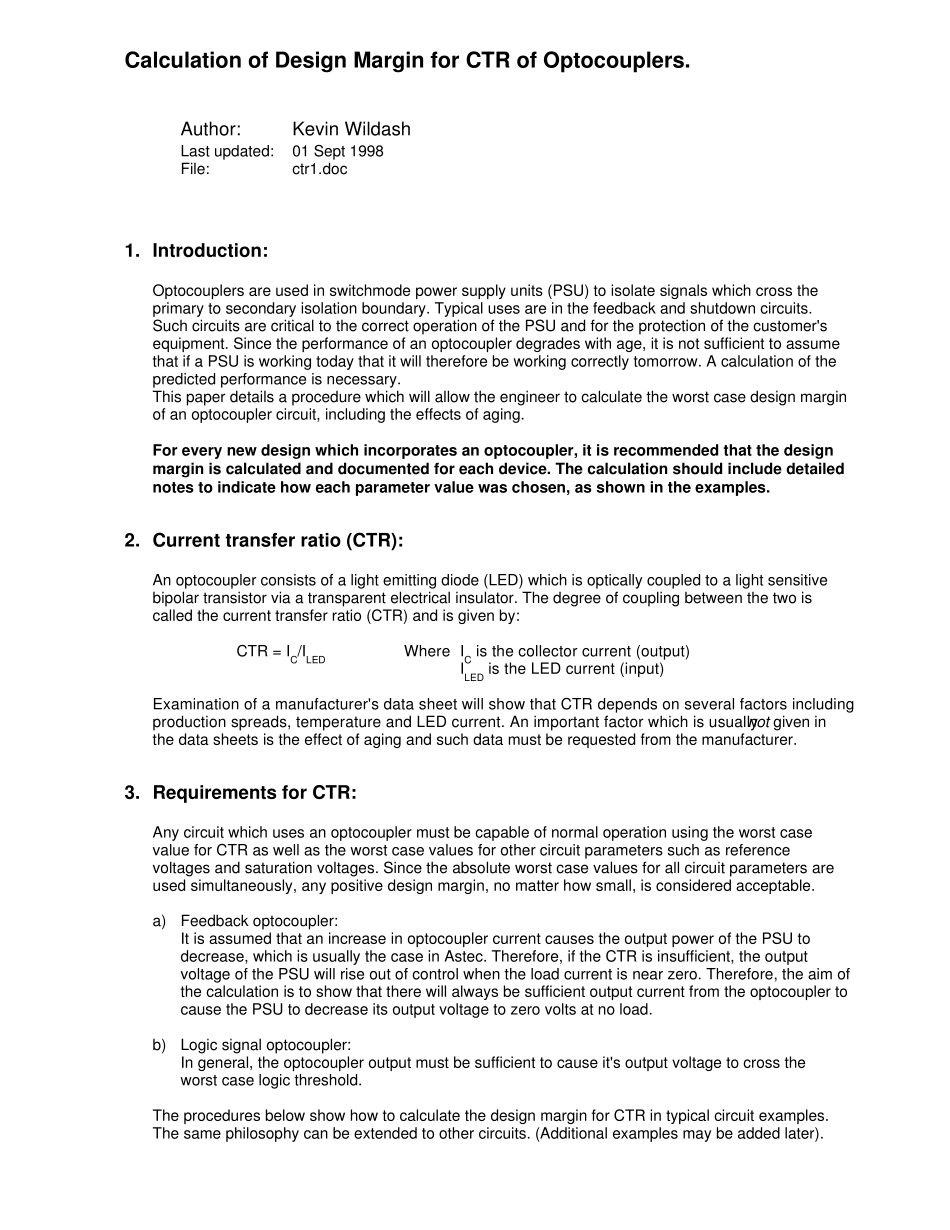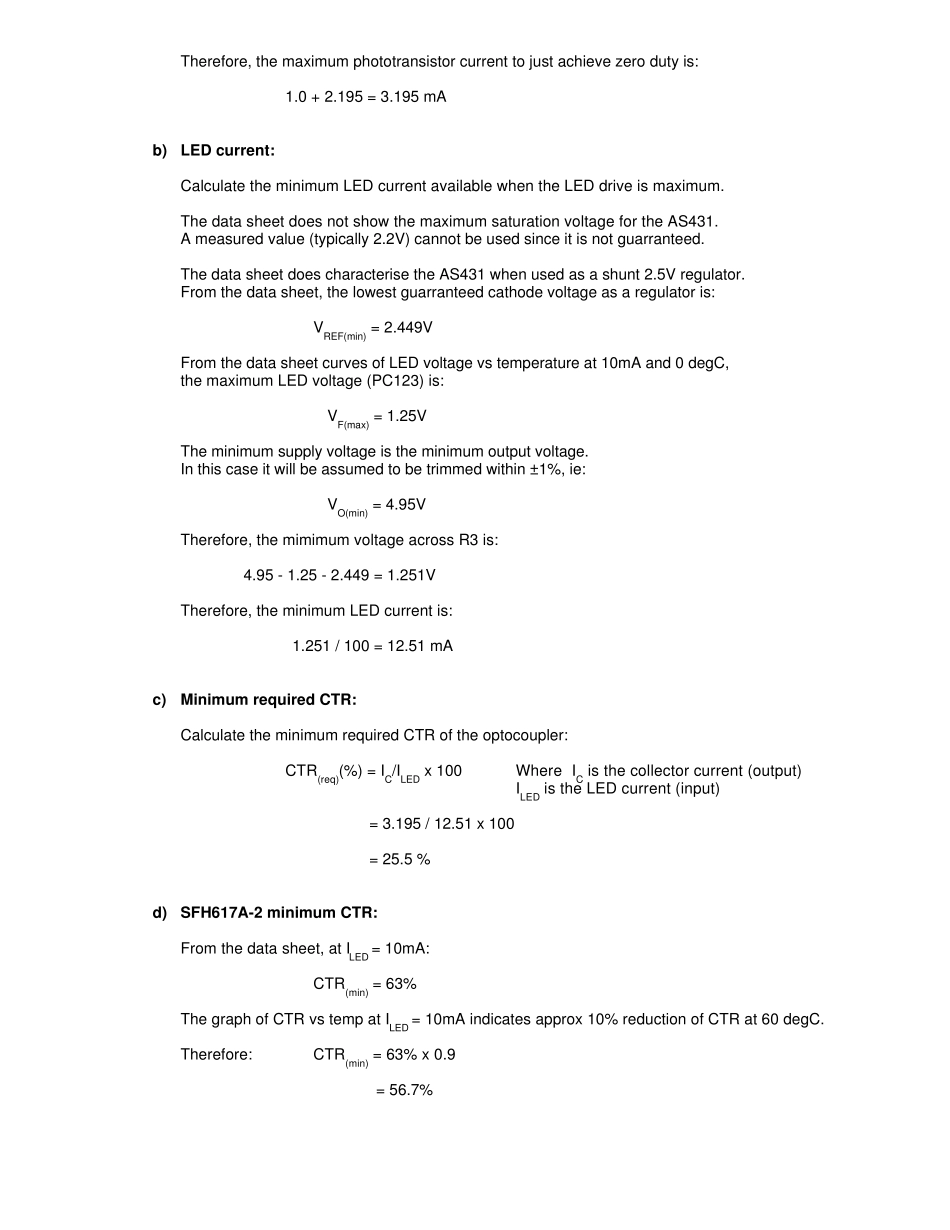Calculation of Design Margin for CTR of Optocouplers.Author:Kevin WildashLast updated:01 Sept 1998File:ctr1.doc1. Introduction:Optocouplers are used in switchmode power supply units (PSU) to isolate signals which cross theprimary to secondary isolation boundary. Typical uses are in the feedback and shutdown circuits.Such circuits are critical to the correct operation of the PSU and for the protection of the customer'sequipment. Since the performance of an optocoupler degrades with age, it is not sufficient to assumethat if a PSU is working today that it will therefore be working correctly tomorrow. A calculation of thepredicted performance is necessary.This paper details a procedure which will allow the engineer to calculate the worst case design marginof an optocoupler circuit, including the effects of aging.For every new design which incorporates an optocoupler, it is recommended that the designmargin is calculated and documented for each device. The calculation should include detailednotes to indicate how each parameter value was chosen, as shown in the examples.2. Current transfer ratio (CTR):An optocoupler consists of a light emitting diode (LED) which is optically coupled to a light sensitivebipolar transistor via a transparent electrical insulator. The degree of coupling between the two iscalled the current transfer ratio (CTR) and is given by:CTR = IC/ILEDWhere IC is the collector current (output)ILED is the LED current (input)Examination of a manufacturer's data sheet will show that CTR depends on several factors includingproduction spreads, temperature and LED current. An important factor which is usually not given inthe data sheets is the effect of aging and such data must be requested from the manufact...


